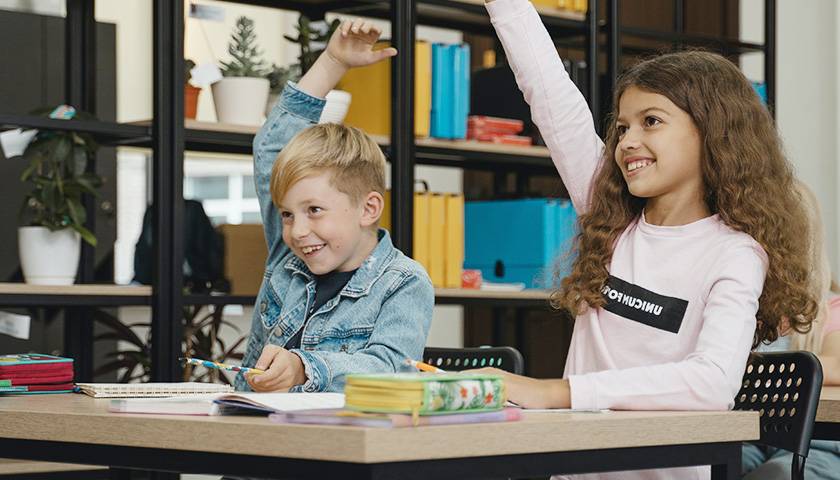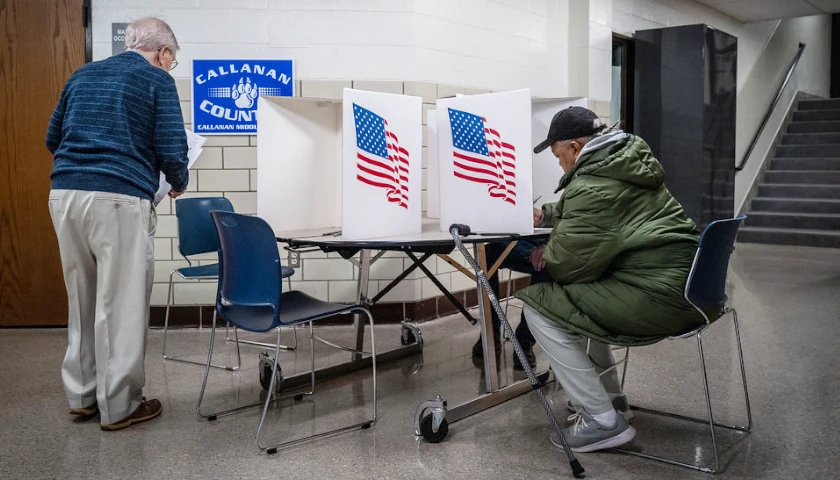Some of the largest public school districts in the nation are planning to close K-12 schools as they face plummeting student enrollment rates.
“Nationwide, public school enrollment fell by more than 1.4 million students to 49.4 million between fall 2019 and fall 2020—a decline of roughly 3%, according to data from the U.S. Education Department,” reported the Wall Street Journal in January. “The following school year, enrollment failed to return to prepandemic levels and remained roughly flat.”
Since school district funding is largely determined by student enrollment, as the huge influx of federal COVID relief funding either dries up or remains unspent, public school officials are now faced with the reality that many students are not coming back after families have been enlightened about other education venues.
School closures, consolidations with other nearby school districts, and staff layoffs are three of the fixes being considered to cope with plunging enrollment and shrinking funding.
Last week, the Seattle Public Schools Board (SPS) put forward its plan to shut down some of its schools as a means to deal with what the board calls a budgetary shortfall of $131 million due to students leaving its government schools.
In a presentation of its plans, the board said its solution to the subsequent drop in funding is to “consolidate into a system of well-resourced schools,” MYNorthwest reported.
Commentary: As parents seek better alternatives, public school enrollment plummets https://t.co/dajgKmjPBk #Minnesota #HomeSchool #SchoolChoice #Parents #VoteRedToSaveAmerica
— Stacey Atneosen (@StaceyAtneosen) August 20, 2022
The Journal cites “declining birthrates, a rise in home schooling and growing competition from private and charter schools” as causes of the significant drop in government school enrollment.
“It’s not entirely clear where students are going, Jen Garrison Stuber of the Washington Homeschool Organization, said, according to Fox News.
While homeschooling rates in the state currently show an increase in at-home instruction of about 43 percent over the pre-pandemic 2019-2020 academic year, Garrison Stuber observed fewer registered homeschoolers than prior to the school shutdowns in spring 2020.
“I really think that what Seattle’s seeing, where those students have gone are either to private schools or they’ve left the school district and have moved elsewhere,” she speculated.
Lack of trust in government-run schools, parents’ desire to have greater control over what their children are learning, and the increased politicization of the classroom are reasons parents have given for pulling their children permanently from public schools.
DeSantis:
"A parent will start reading whats in the books and the school board members say, 'No no, it's too graphic, you can't do that at a school board meeting.' How, if it's too graphic for a school board meeting, it's OK to do with a 5th grader!?" pic.twitter.com/DH7TII66BQ
— Citizen Free Press (@CitizenFreePres) February 14, 2023
In a report at The Conversation last week, Stanford University Professor Thomas Dee also noted the dramatic learning loss suffered by students when schools were shut down once the COVID pandemic was declared.
“Nationwide testing results released in the fall of 2022 revealed that the reading and math performance on standardized tests of students who were in fourth and eighth grades in the U.S. in the 2021-2022 school year declined by historic amounts,” Dee wrote.
House Republican leaders in late March 2022 revealed teachers’ unions collaborated with the Centers for Disease Control and Prevention (CDC) at an “unprecedented” level to craft school reopening guidance that met the needs of the unions, a discovery that likely fed the mistrust of parents.
Dee worked with The Associated Press and data journalists at Stanford’s Big Local News to examine where students went after leaving government schools.
Of the data available, about 140,000, particularly younger students, left for private schools – which only corresponds to about 14 percent of the drop in public school enrollment.
Additionally, the data confirmed “the robust growth of home-schooling” once the pandemic began and public schools shut down:
In the 22 jurisdictions with data, home-school enrollment increased by over 184,000 students between the 2019-20 and 2021-22 school years – a 30% increase. For every additional student enrolled in private school over this period, nearly two entered home-schooling. This sustained growth in home-schooling explains 26% of the corresponding losses in public school enrollment.
https://twitter.com/InsanityCrushr2/status/1624733984071512064
The votes to close public schools due to plunging enrollment have been ongoing since last year.
The Denver Post reported in November the board of education in Jefferson County public schools in Colorado – the state’s second-largest district – voted unanimously to close 16 elementary schools to deal with students fleeing government schools.
According to the report:
The closures, most of which will take place at schools across Denver’s suburbs next year, are just the first step in the district’s consolidation plan. Jeffco Public Schools plans to announce next year which secondary schools it wants to close.
Earlier in February 2022, the Oakland, California school board voted to close seven schools after Superintendent Kyla Johnson-Trammell said that the district was dealing with a “financial crisis and a quality crisis.” The decision, she added, would help the district recruit and retain teachers.
As The Star News Network reported last week, however, some of the threats of school closures and staff layoffs may serve as attempts to snag more state funds for schools to pad the federal COVID monies that have yet to be spent.
In Wisconsin, the report noted, Gov. Tony Evers (D) is calling for billions more in education spending even as a new transparency report by the Institute for Reforming Government noted the Department of Public Instruction (DPI) had still only approved 34% of the $1.49 billion given to Wisconsin’s government schools via the Elementary and Secondary School Emergency Relief (ESSER) Fund III – part of the $1.9 trillion American Rescue Plan Act.
“Wisconsin school districts also received $174 million in the first round of ESSER money, and $686 million from ESSER Fund II,” the report observed as well.
“It’s safe to say, DPI is lagging far behind,” it added. “Some $985 million remains inactive, yet to be approved by DPI as Evers prepares to drop billions of dollars more into his education budget, the Institute for Reforming Government (IRG) notes.”
– – –
Susan Berry, PhD, is national education editor at The Star News Network. Email tips to [email protected]
Photo “School Students in Class” by Tima Miroshnichenko.




